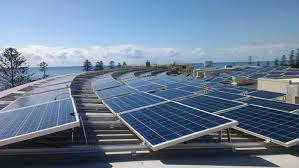Bulk Energy Profits
There is an emerging concern as to where to draw the line when strata managers and owners corporations are on-selling energy to residents and commercial tenants within their premises.
Typically bulk electricity supply can generate savings of 25% – 40% on the total combined energy usage of the building. Savings are typically passed on to tenants or used to offset common area energy costs. However, intermediary service providers also make a margin for their services.
Owners corporations and strata managers need to ensure that tenants are happy with the arrangement, and that benefits are equitable and legal. While there are certain exemptions that apply to strata buildings, acting as a ‘Prosumer’ intermediary in the production and/or supply of energy services is within the domain of the Australian Energy Regulator.
In a one case, a commercial tenant in a mixed use strata building was told by the owners corporation that he must purchase his LPG gas through their embedded network at what turned out to be a higher price than other provider quotes. He was actively prevented from choosing his own LPG gas provider. This goes against Australian Energy Regulator (AER) Retail Law, which states that “exempt customers should, as far as practicable, be afforded the right to a choice of retailer in the same way as comparable retail customers in the same jurisdiction have that right”. In principle, customers should be able to choose their energy retailer.
What is the ‘Prosumer’ Market?
Technological advances and decreasing costs in renewable generation, battery storage, software and connectivity are driving innovation in energy products and services. In particular, there is significant growth in embedded networks and the number of related service providers with the real growth arising from on-selling electricity to multiple residential consumers in strata buildings.
This has changed the role of the owners corporations and strata managers as their participation in the energy market means they have an active role in choosing among products and services and understanding, monitoring and managing consumption. This has transformed many stratas into so called ‘prosumers’ – consuming energy, but also producing and selling it. The advent of battery storage and the development of new trading mechanisms will provide prosumers further opportunities for trade, allowing them to sell the energy they generate not only back to the grid, but also to their tenants and neighbours.
The benefits of embedded networks can include:
- Reduced electricity rates for tenants and common areas
- Greater control over site infrastructure and metering
- Better energy monitoring and management
- Improved ability to service tenant electrical upgrade needs
- Additional revenue streams for building upgrades
The nature of embedded networks is also evolving. Systems are changing from basic ‘set and forget’ private networks to more advanced ‘test beds’ that combine renewable generation, storage, and energy efficient or ‘smart’ products, all managed within a control system. Battery storage has made solar plus storage an increasingly realistic option with market observers estimating take-up rates of up to 40 per cent by 2035. Power generated by solar panels and stored in batteries, can be used within an embedded network for common areas as well as contributing to tenant supply.
The luxury 142 apartment Living Choice retirement development in Fullarton, South Australia, has a 200 kW solar system contained within its embedded network. The solar system powers common areas and off-sets consumption for participating residents who have signed up for ‘theoretical ownership’ of the system through a package incorporated into long-term leases.
It is likely that embedded networks will continue to become more commonplace due to the huge incentives for owners and developers and they will ultimately become a significant part of the National Energy Market. This will encourage more strata buildings to become ‘prosumers’ in a bid to both reduce their energy bills and make a profit from their energy generation systems. In the coming years as prosumers become the norm in the strata industry, regulations are also likely to tighten, enforcing consumer protections within this emerging industry.


Leave a Reply
Article gives the impression that 1 ‘prosumers’ can make a profit to offset common property costs and 2 tenants can opt out when they become aware of a lower price becoming available to them. The article simplifies some aspects of embedding supply like ignoring requirement of a single NMI.
Currently, pricing is rapidly changing and what may apply at the desk today may well be different in six months. Lead times can be longer than that.
My understanding was that as the on-seller of bulk-purchased electricity, the Body Corporate was not permitted to make a profit. How can we therefore make money to offset common property costs?